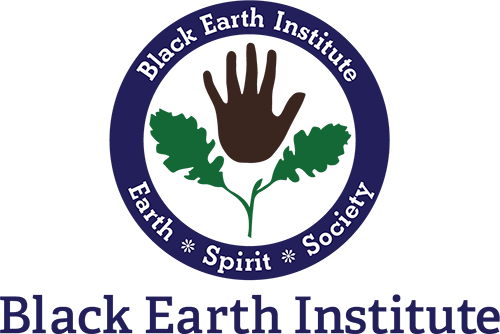
Ann Fisher-Wirth was Nominated for ‘Ironing’ published in The Ilanot Review; and was nominated for ‘Val Corsaglia’ and ‘Science and Poetry: Beyond the Radish Seeds’ by Scarlet Tanager Press.
Ironing
I have the whole of time and space to find again the face I seek
—adapted from a line by Gyorgyi Voros
We’re sending our father his Christmas box—
first and second-grade pictures,
a blue-gray flannel shirt, fleece-lined slippers, stinky cheese—
It’s cold in Korea, our mother tells us, and he misses
food from home. We blow kisses in the box,
wrap it with twine,
seal each seam with melted wax,
and off it goes to his APO. What’s an APO? we ask her.
Next, it’s time for ironing.
We press handkerchiefs at our own small boards
as she deftly noses her iron into the gathers of skirts,
smooths out collars and lapels,
lines up pleats and holds them firm
while with the iron she slicks the steam in.
The kitchen becomes a fragrant cave,
full of the week’s fresh clothes
on hangers over the cupboard knobs.
And as we follow our father
from Pennsylvania to Japan, from Japan
to California, we while away the work
with “Let’s Describe” or “Movie Stars”—
Let’s describe a ballgown, let’s describe
a beach cabana—Can you name three
movie actresses whose last names start with C?
. . .
Now, as the wind rises
and temperatures head downward once again,
I smooth and press the lace-edged cutwork napkins
that she folded next to the rose chintz Spode
when she hosted Army wives.
And I recall the chapel, my navy blue wool dress,
my fear to touch his face,
one bronze chrysanthemum petal
falling on his hand, our mother telling the undertaker,
Let me fix his hair.
He never wore it parted quite so high.
Val Corsaglia, Italian Piemonte
We walked away from the village of Corsaglia along a trail that led through lush,
Species loss
nearly impenetrable oak, hazelnut, and chestnut woods, past ancient stone houses
ocean acidification
and shepherds’ huts, beside a rushing stream. When we began to walk it was softly
ocean “dead zones”
raining. The rain soon stopped, but the mist and cool soft air remained. Everywhere
global freshwater crisis
wildflowers—buttercups, daisies, scabiosa with its purple tufts, Johnny jump-ups,
deforestation
button ferns, wild geraniums, wild strawberries. Once, when the river
consequent soil erosion
curved away, a meadow opened up to our left, and it was so richly flowering
colony collapse disorder
that I could only think of the millefleurs foregrounds of medieval paintings,
fertilizers and herbicides, chemically toxic soil
the thousand small flowers springing up around the Christ child
Science and Poetry: Beyond the Radish Seeds
By the road to the contagious hospital
under the surge of the blue
mottled clouds driven from the
northeast—a cold wind. Beyond, the
waste of broad, muddy fields
brown with dried weeds, standing and fallen
patches of standing water
the scattering of tall trees
All along the road the reddish
purplish, forked, upstanding, twiggy
stuff of bushes and small trees
with dead, brown leaves under them
leafless vines—
Lifeless in appearance, sluggish
dazed spring approaches—
They enter the new world naked,
cold, uncertain of all
save that they enter. All about them
the cold, familiar wind—
Now the grass, tomorrow
the stiff curl of wildcarrot leaf
One by one objects are defined—
It quickens: clarity, outline of leaf
But now the stark dignity of
entrance—Still, the profound change
has come upon them: rooted they
grip down and begin to awaken
This poem, commonly known as “Spring and All,” first occurs in William Carlos Williams’s Spring and All, a mélange of prose and poetry published in 1923 by Robert McAlmon’s Contact Publishing. It is a wonderful example of the wedding of science with poetry—the doctor passing by muddy fields on his way to a hospital for contagious diseases, appreciating the seediness of spring, and aware, as he writes in Kora in Hell, that “pathology . . . is a flower garden. . . . The study of medicine is an inverted sort of horticulture” (77). It is the first poem in the book, and breaks out of several pages of prose celebrating “the imagination,” which Williams describes as the “single force” able “to refine, to clarify, to intensify that eternal moment in which we alone live…” He fantasizes destroying the “meager times,” the “prohibitions,” indeed “houses,” “cities,” “the human race,” so that “order and peace” may abound and the world may be refreshed. And out of this rises the poem; out of this rises the springtime. “Suddenly it is at an end. THE WORLD IS NEW.”
I did not study science when I was young. That’s an understatement. At Pomona College, when forced to sign up for botany and conduct an experiment, I never got around to planting my radish seeds in order to find out whether they grew better to silence, Bach, or the Beatles; instead, I carried the seeds around in my pocket all semester. However, a great longing for closer contact with the natural world awakened in me when I stayed up all one night reading Walden for an English class, and I staggered into the dining hall the next morning all ready to head out for the pond. Later, when my children were small, I learned to garden, because that was something I could do while they napped, and then we could walk to the garden center and stroll the aisles choosing flowers. Eventually my life took me to living on a farm and spending a lot of time in the woods—and eventually, after that, I moved to Mississippi, where I created our Interdisciplinary Minor in Environmental Studies. This year, I am Principle Investigator on an NEH Planning Grant, “Environmental Literacy and Engagement in North Mississippi,” which involves close collaboration among humanities, social sciences, and natural sciences to redesign the year-long introductory course sequence and develop a lot of outreach and internship opportunities for our students. Working with my colleagues in different departments, especially biology, has taught me a great deal. So has teaching the mandatory gateway course Humanities and the Environment, and several other environmental literature courses, in which we study writers such as Rachel Carson, Elizabeth Kolbert, David George Haskell, Drew Lanham, Janisse Ray, and the other members on this panel. As coeditor with Laura-Gray Street of The Ecopoetry Anthology—which is 625-pages of American nature poetry and ecopoetry from Whitman to the present—I became aware of the tremendous range and diversity among poets for whom the other-than-human world is of pre-eminent importance, and who write about it with a scientific accuracy that reveals the natural world’s specificity, variety, and abundance. In “Jubilate Agno,” the 18th-century British poet Christopher Smart writes, “God make gardeners better nomenclators”—a line that I take to refer to the quest for art and precision in naming the ten thousand things of this world.
I’ve always loved the metaphor of Indra’s net—the vast, jeweled net into which all things are woven—and the realization that any slightest movement on the net ripples throughout creation. It is wonderful that recent work like Merlin Sheldrake’s book Entangled Life: How Fungi Make Our World, Change Our Lives, and Shape Our Futures shows how this interdependency extend throughout the entire living world; his study of mycelium demonstrates, as a review in The Guardian says, “how life forms interpenetrate and change each other continuously,” and how it “is the tissue that holds together much of the world.” Once more, science is discovering what poetry and religion have long known: in ways we only begin to understand, we are connected.
Much of my own poetry focuses on place. I have lived in Mississippi for 32 years—a state that suffers from severe environmental degradation that cannot be separated from its history of poverty and racial oppression. Yet, although there is nothing pristine about Mississippi, it also possesses great natural beauty. I’ll finish by reading two poems that, I think, speak to both the brokenness and the beauty:
Winter Day on the Whirlpool Trails
Where the power lines go through,
the red clay gullies and pits, not even
privet can grow fast enough to bind it.
We clamber down and up, and down and up,
and turn to enter the woods. Further along,
we come to broken glass, old brown bottles
nearly buried, a toilet choked with brush,
bricks, some pipes, some turquoise plastic coiling.
It’s just like that, here—people dump things
and they sink, protrude rusty and jagged
from the mud, or block the trail,
stained with leaf mold. To the side,
some withered Southern red oaks,
a blackjack oak, knobby trunks of trees
choked by spiraling vines—Virginia creeper,
poison ivy—and leafless sweetgums
with their little sci-fi seedpods.
Everywhere rotting, everywhere teeming,
moss like emeralds on the stumps,
the hollow logs. This is my home, this leaf-duff
and dereliction, where look—a vulture wheels
above the cedars, searching for what stinks.
Where a first tender violet, blooming
by my feet before Valentine’s Day,
signifies the seasons are in heat.
The great blue heron’s not here today,
standing motionless among the reeds.
But a turtle slides off a distant log, and sunlight
scatters like shot across the scum-slicked pond.
Credo
But the cardinal, the birdsong, do not need you,
to pulse forward into the light. The peaches do not need you,
to swell and soften, dark with the sugars of summer.
Oh you can be the flesh their juices run down,
but you do not make the seed nor the earth it grows in.
And the artist, what is she? The one whose hands are empty.
Who says—though to what, I do not know—
speak through me as you will.
Who calls the made thing out of the sheltering darkness.
Now the day is full of leaves.
After the rain, the sky is low and white as ash.
The ragged garden spikes and trembles.

